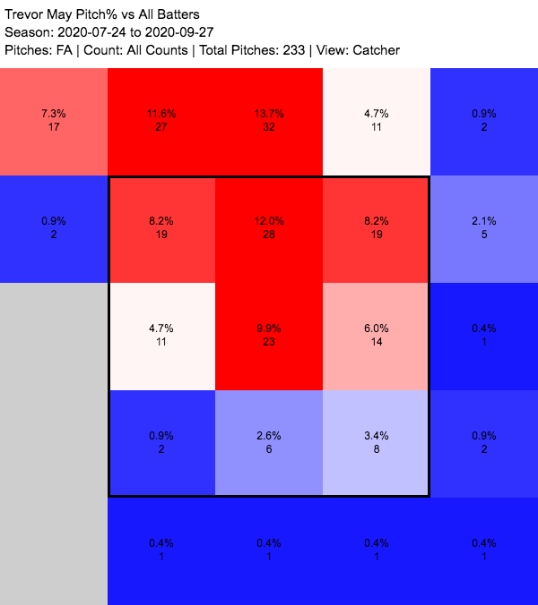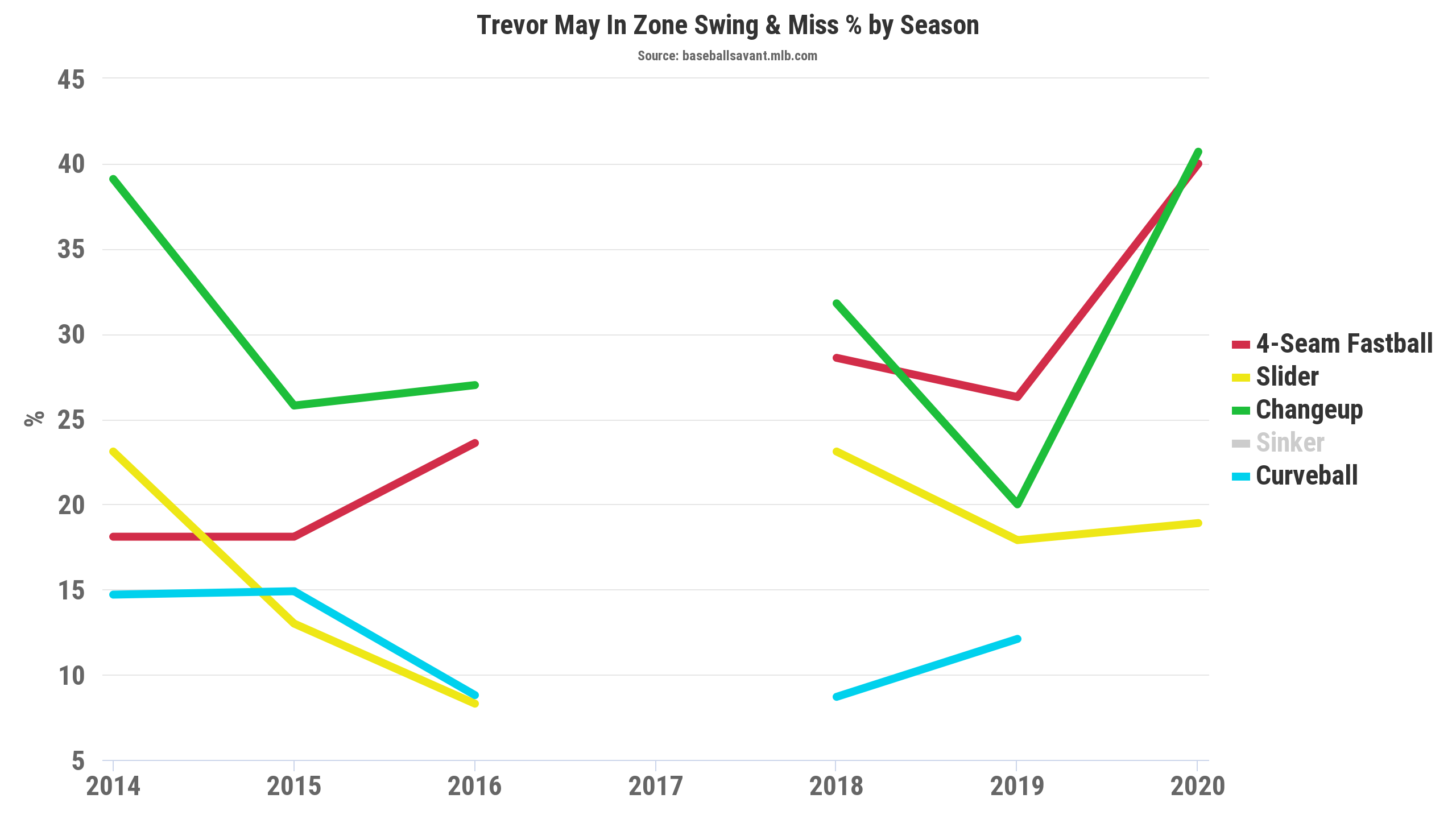While scrolling The Athletic’s site recently, I came across a headline that gave me pause, citing Kansas City Royals general manager Dayton Moore saying he “expects to win” in 2021. Front office personnel in every organization do a bit of work hyping up their teams during the offseason; just a year ago, Rockies owner Dick Monfort predicted a 94-win season for a club that had won just 71 games the year before. Moore, to his credit, was much more vague when assessing the Royals. From Athletic beatwriter Alec Lewis:
“We expect to win next year. What does that look like? Is it going to be enough wins to make the playoffs? We’ll find out. But our mindset is going to be to go out and win every single pitch, every inning, every game. That’s the only way we’re ever going to win another championship.”
Moore isn’t guaranteeing a playoff spot, or even a winning record; all he vows is an intent to win games, which is a pretty easy promise to keep. Every team wins games, because the season lasts a very long time, and baseball itself is a weird sport in which a very bad team can defeat a very good team on any given day with only a couple of things breaking the right direction. Even if Moore is hedging here, though, his tone is unambiguously positive, and not even in some “trust the process” sort of way. He thinks his team has a fighting chance, just five months after drafting in the top four selections for a second year in a row.
That kind of faith inspired me to figure out for myself if Royals fans should share that optimism. I’d never previously considered Kansas City to be a threat in 2021. I still don’t, but let’s not get ahead of ourselves. Peek over at our current Depth Charts projections, and the Royals’ WAR total ranks 21st in baseball. That’s far above 100-loss territory, and even within spitting distance of plausible playoff territory; it’s within two and a half wins of the Phillies, Reds and Cardinals, three teams you wouldn’t be shocked to see in the postseason next year. That would also constitute a downgrade from where the Royals finished this season, when they ranked 15th in the majors in batting WAR and 19th in pitching WAR.
You may not have noticed, since they never stumbled into the playoff hunt the way other rebuilding teams like Detroit and Baltimore did, but the Royals actually improved quite a bit in 2020. They added nearly 70 points to their win percentage in one season, going from 59–103 to 26–34. Their pythagorean record was actually slightly better at 27–33. Part of the reason for that could certainly be the shortened season, but it isn’t as though limiting the previous year to 60 games would have done them any favors. Kansas City went 19–41 over its first 60 games in 2019 and 16–44 over its final 60. This was a step forward — the first big one of the rebuild.
Where did those improvements come from? The most obvious source would be the pitching staff, which featured two rookies — Brady Singer and Kris Bubic — joining the rotation full-time after never previously appearing in the majors, or even in Triple-A for that matter. Those two wound up holding their own, while staff ace Brad Keller turned in a career year.
Royals 2020 Starting Pitchers
| Name |
G |
GS |
IP |
K/9 |
BB/9 |
HR/9 |
BABIP |
GB% |
ERA |
FIP |
xFIP |
WAR |
| Brady Singer |
12 |
12 |
64.1 |
8.53 |
3.22 |
1.12 |
0.260 |
53.1% |
4.06 |
4.08 |
4.05 |
1.0 |
| Danny Duffy |
12 |
11 |
56.1 |
9.11 |
3.51 |
1.60 |
0.285 |
31.9% |
4.95 |
4.75 |
4.94 |
0.6 |
| Brad Keller |
9 |
9 |
54.2 |
5.76 |
2.80 |
0.33 |
0.233 |
52.8% |
2.47 |
3.43 |
4.33 |
1.3 |
| Kris Bubic |
10 |
10 |
50.0 |
8.82 |
3.96 |
1.44 |
0.312 |
46.6% |
4.32 |
4.75 |
4.48 |
0.5 |
| Jakob Junis |
8 |
6 |
25.1 |
6.75 |
2.13 |
2.49 |
0.350 |
44.8% |
6.39 |
6.23 |
4.77 |
-0.2 |
| Carlos Hernandez |
5 |
3 |
14.2 |
7.98 |
3.68 |
2.45 |
0.349 |
38.3% |
4.91 |
6.4 |
5.09 |
-0.2 |
| Matt Harvey |
7 |
4 |
11.2 |
7.71 |
3.86 |
4.63 |
0.477 |
42.0% |
11.57 |
9.45 |
5.41 |
-0.5 |
As it stands right now, the top five names here are the likeliest to fill out the rotation in 2021, and it’s a solid enough group. Bubic was No. 110 on Eric Longenhagen’s global Top Prospect list entering this season, and Singer, the team’s first-round pick in 2018, ranked just one spot below Bubic on his Royals list. The success of those two were significant victories for the organization this year.
The lineup saw modest gains as well thanks to two veterans who weren’t around the year before. Salvador Perez was the headliner: After missing the entire 2019 season because of Tommy John surgery, he burst back into the offense by hitting .333/.353/.633 with 11 homers in 156 plate appearances, getting a bit lucky on balls in play while also hitting for more power than he ever had. Perez’s terrific season at the plate received an enthusiastic cosign from Statcast, which rated him in the 96th percentile in xwOBA despite the fact that he walked in less than 2% of his plate appearances.
Then there was third baseman Maikel Franco, who signed with the Royals after being non-tendered by Philadelphia and rewarded his new club by slashing .278/.321/.457 for a 106 wRC+ and 1.3 WAR while starting all 60 games at the hot corner. It was Franco’s best offensive season since 2015 and, despite the shortened season, his best WAR total since ’16. With Jorge Soler, Hunter Dozier and Whit Merrifield all still hitting at an above-average clip, Kansas City recovered some of the thump it had sorely missed out on in recent years; its 92 wRC+ as a team was its highest since 2015, the year it won the World Series.
To have so many things go well in 2020 — the successful return of the star catcher, the bounce-back of the change-of-scenery–free-agent signing, solid seasons from two rookie starters and the established core players meeting expectations — should certainly give a GM a jolt of energy heading into the winter. The flip side is that in spite of all that good news, the Royals still couldn’t contend, and it’s hard to see much more room for growth from the players currently on the roster.
As good of a sign as it was to see the young pitchers quickly settle into the rotation, neither Singer nor Bubic are projected to be much more than No. 3 or 4 starters, which wouldn’t be far above what they did in 2020. Meanwhile, Keller outperformed his xwOBA by more than 80 points last year according to Statcast, making him more likely to regress than to improve.
The offense doesn’t appear to be standing far below its ceiling, either. Dozier and Soler could help by returning to their 2019 numbers, but that may be offset by any regression that comes for Perez. Perhaps Adalberto Mondesi taps into the pop he showed in 2018, or one of the Irish Ryans at first base — McBroom or O’Hearn — makes some kind of jump. But a scan of this roster doesn’t really reveal any good hitters who woefully underperformed this season or some dormant former top prospect waiting to break out. The offensive performance this team showed in 2020 may be as good as this current group is going to get.
There is help coming from the minors, but it’s unlikely the impact will be felt in 2021. Wunderkind shortstop Bobby Witt Jr. is just 20 and has all of 37 rookie league games to his resume. Left-hander Asa Lacy, the No. 4 overall pick in 2020, has yet to throw a pitch in a professional game. Fellow southpaw prospect in Daniel Lynch hasn’t pitched above Advanced-A and is said to have the same limited ceiling Bubic and Singer. Asking any of these players to contribute much in 2021 would require speeding up their developmental timelines considerably.
If Kansas City wishes to take another step forward in the coming season, then, it will require moves to be made this winter. And even though no one is expecting the Royals to be one of the major players in free agency, there may be some reason for optimism that the team could be active in some meaningful way. Again from Lewis:
“There’s a fine line between aggressive and reckless, and Moore has walked it, finding comfort in the former. When the Royals signed Gil Meche in the winter of 2006, they agreed to an extra year so that they could make the acquisition. In the winter of 2013, Moore executed a similar deal in signing Omar Infante. Through experience, he understands teams must reach deep into their pocketbooks. If that time comes again, the Royals will do so again.”
There is no shortage of ways for Kansas City to improve via free agency. It could replace second baseman Nicky Lopez, who has been below replacement level in each of his first two big league seasons, on the open market with Kolten Wong or Tommy La Stella. It could add Joc Pederson or Michael Brantley to its outfield, or sign a starter like James Paxton or Mike Minor. An offseason that includes two or three of these moves wouldn’t break the bank for a team currently on track to spend just $76 million on payroll in 2021, and could add upwards of six or seven wins to the Royals’ projected WAR total, vaulting them into about the 16th-ranked spot in the majors.
Unfortunately, the front office may not see much reason to attempt that kind of run. According to our Depth Charts, Kansas City could add nine wins to its projected WAR total and still not surpass the next-closest AL team, the Red Sox. Boston is one of 10 AL teams currently expected to outperform the Royals in 2021, and that’s before those teams have added free agents and made trades. If Kansas City played in the NL Central, it might be able to spend its way to contention. But in the challenging AL Central, the obstacles are simply too great.
The Royals’ encouraging steps forward in 2020 place them closer to baseball’s middle class than you may have expected. They’re just in the wrong league to take advantage of that. To make the jump in the AL, they will need to develop this line of top draft picks — Witt Jr., Lacy, the No. 7 pick in 2021 and likely another top-10 pick in 2022 — into stars. Moore’s ambitions for ’21 are noble, but this time next year, he’ll probably be happy he didn’t make any bold predictions.


